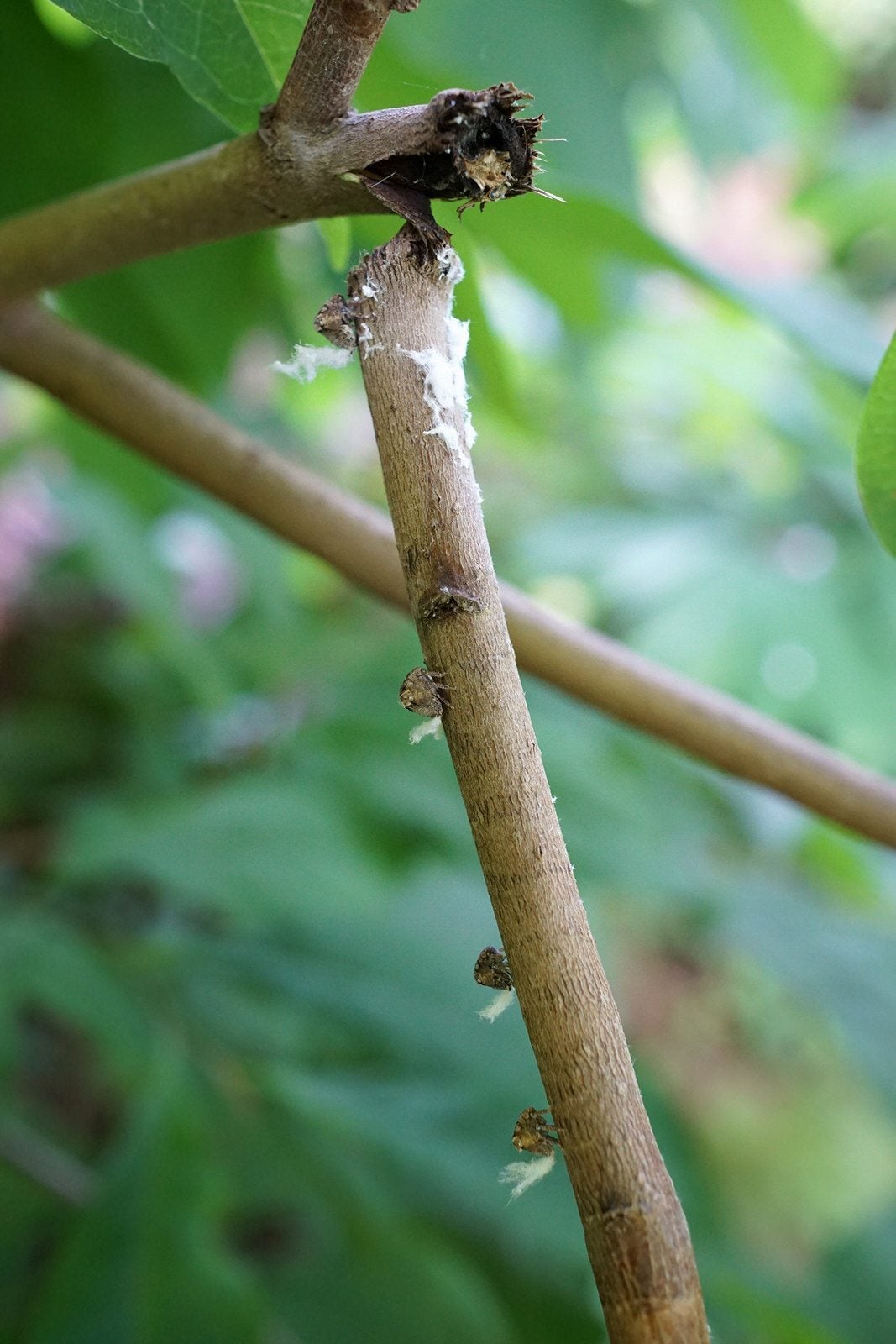Pawpaw Trimming Tips: How To Prune A Pawpaw Tree


The pawpaw tree (Asimina spp.) is native to the eastern part of the country where it grows along the edges of woodlands. It is cultivated both for its edible fruit, the pawpaw, and its brilliant fall color. Pawpaw tree pruning is sometimes helpful or necessary. If you are thinking of planting these fruit trees, you’ll need to learn how to prune a pawpaw. Read on for pawpaw trimming tips.
About Pawpaw Tree Pruning
Pawpaw trees have grown in North America for centuries, and Indigenous Americans relied on pawpaw fruit for part of their diet. The trees are deciduous and develop purple flowers in spring before leafing. Fruits appear in summer and ripen in fall. They can grow to 6 inches (15 cm.) long and half that wide. Pawpaw trees can grow with a single trunk or with multiple trunks. They also tend to produce suckers and grow in clumps. Pruning a pawpaw tree may be necessary if you want your pawpaw tree to have one trunk, or you want to stop new trees from forming from the pawpaw roots.
Pruning a Pawpaw Tree
Cutting back pawpaw trees may be necessary to establish a sole trunk. Most gardeners choose to grow pawpaws with a single leader. In order to do this, you’ll have to select the strongest leader and allow this one to grow. Then start pruning a pawpaw tree’s less vigorous leaders. Cutting back some of the pawpaw branches can also give the tree a stronger structure. Check the strength of the crotches where pawpaw branches attach to the trunk. Consider cutting back pawpaw tree branches if the crotches are weak or have narrow angles. Finally, pawpaw tree pruning is necessary if you see tree suckers growing close to the tree. Left to their own devices, these will turn into a large pawpaw tree clump. If you don’t know how to prune a pawpaw sucker, don’t use pruners. You’ll want to pull up the young suckers by hand. Pruning a pawpaw tree’s lower branches may be necessary if you want to be able to walk beneath the crown. How to prune a pawpaw in this way? Just remove the lowest branch with pruners or a small saw, then move on to the next lowest until you achieve the access you want. No need to over prune this tree, however. Pruning a pawpaw tree may not be necessary if a central leader forms naturally and you don’t need space to walk below the tree. Always prune out dead, weak, broken, or diseased branches from the tree, as these can invite pest or disease issues later.
Sign up for the Gardening Know How newsletter today and receive a free copy of our e-book "How to Grow Delicious Tomatoes".

Teo Spengler is a master gardener and a docent at the San Francisco Botanical Garden, where she hosts public tours. She has studied horticulture and written about nature, trees, plants, and gardening for more than two decades, following a career as an attorney and legal writer. Her extended family includes some 30 houseplants and hundreds of outdoor plants, including 250 trees, which are her main passion. Spengler currently splits her life between San Francisco and the French Basque Country, though she was raised in Alaska, giving her experience of gardening in a range of climates.